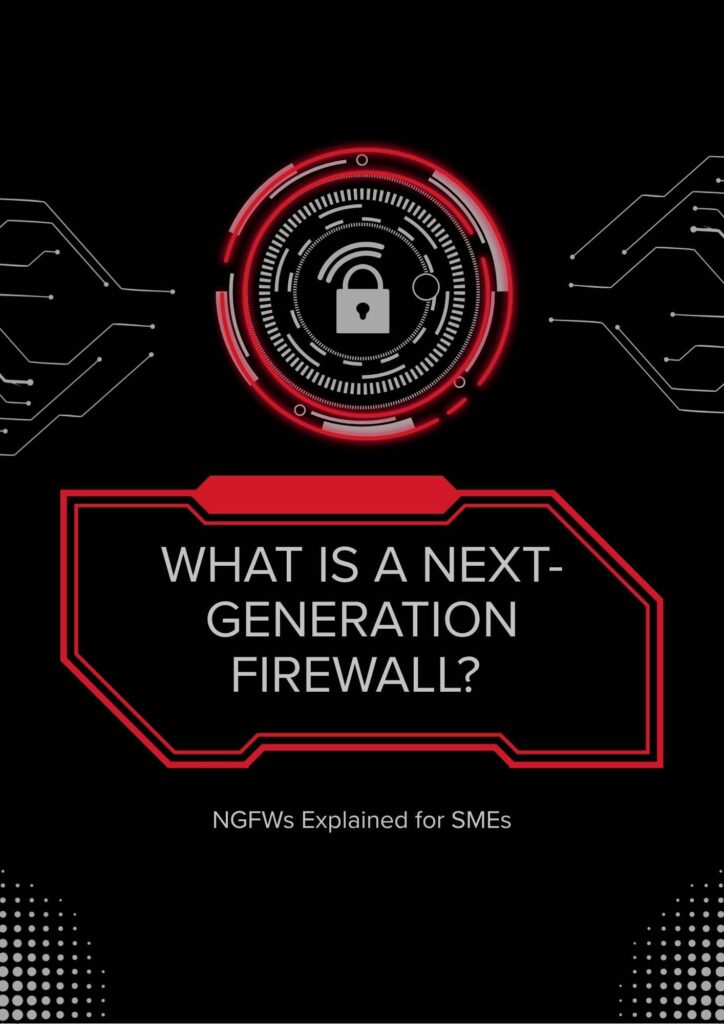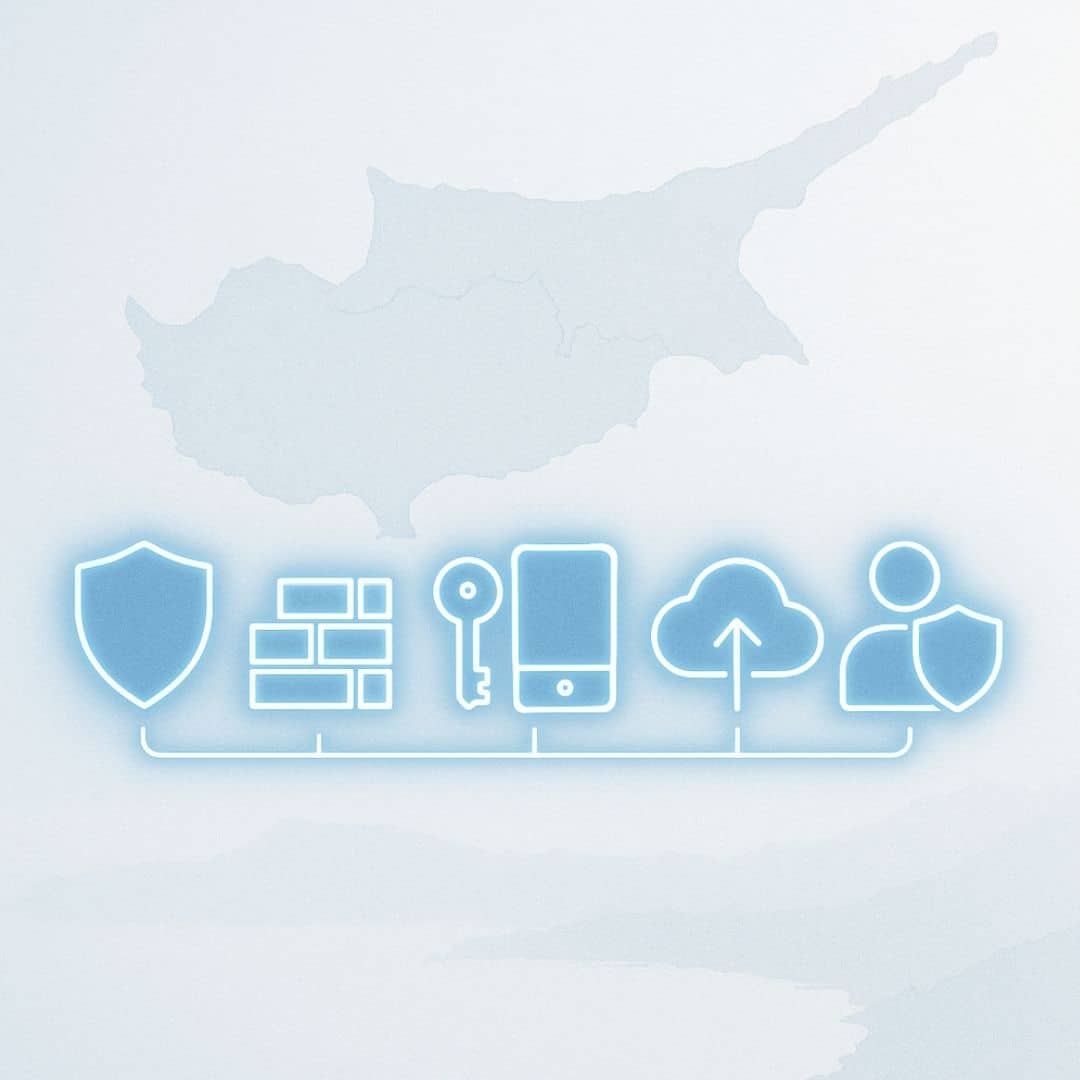Introduction
We are in 2025 and firewalls are no longer optional. This is why Next-Generation Firewalls are your first line of defense. Traditional firewalls can’t keep up with modern threats. Enter the Next-Generation Firewall (NGFW) — a smarter, more powerful way to protect your business.
In this guide, we’ll explain what a next-generation firewall is, how it works, and why SMEs should consider upgrading.
What Is a Next-Generation Firewall (NGFW)?
A Next-Generation Firewall (NGFW) is a security device that goes beyond basic packet filtering. It combines traditional firewall functions with advanced features like:
- Deep packet inspection (DPI)
- Intrusion prevention systems (IPS)
- Application-level filtering
- Threat intelligence integration
- Encrypted traffic inspection
- Malware detection and sandboxing
Unlike legacy firewalls that only monitor ports and protocols, NGFWs analyze actual content and behavior — giving you far greater visibility and control.

NGFWs don’t just block what’s bad — they understand what’s happening on your network and make smarter decisions.
Why Traditional Firewalls Aren’t Enough
Traditional (stateful) firewalls are like border guards checking passports. They look at IP addresses and ports but have no idea what kind of traffic is passing through.
Here’s why that’s a problem:
- Modern threats use legit-looking traffic (like HTTPS) to sneak in
- Malware can hide in common applications like email or cloud storage
- Employees may unintentionally install risky apps or visit unsafe sites
- Sophisticated attacks can bypass basic filters completely
A traditional firewall simply can’t detect or stop these types of threats. That’s where NGFWs shine.
Key Features of Next-Generation Firewalls
Here are the core capabilities that set NGFWs apart — and why they matter for SMEs:
1. Deep Packet Inspection (DPI)
Inspects the actual data inside packets, not just the header. DPI helps detect malware, ransomware, and exploits that hide inside seemingly normal traffic.
2. Application Awareness
NGFWs can identify and control specific apps — from Zoom and Dropbox to TikTok or BitTorrent. You can block, allow, or limit usage by role, time, or risk level.
3. Intrusion Prevention System (IPS)
Built-in IPS can detect and block known attack patterns in real time — like SQL injection, cross-site scripting, or brute-force attacks.
4. User Identity Integration
NGFWs can enforce rules based on user identity, not just device IP. This is crucial in remote or hybrid environments.
5. SSL/TLS Inspection
Over 80% of web traffic is encrypted. NGFWs can decrypt and inspect that traffic without slowing everything down — closing a major visibility gap.
6. Sandboxing & Malware Detection
Suspicious files can be sent to a secure sandbox where they’re executed and analyzed. If they behave like malware, they’re blocked before reaching your network.
Why SMEs Should Care
You don’t need to be a large enterprise to be a target. In fact, SMEs are more likely to be hit by cyberattacks because they often have weaker defenses.
Here’s how an NGFW protects your small or mid-sized business:
- Blocks ransomware before it hits your files
- Stops phishing and malicious websites from tricking employees
- Controls shadow IT by managing which apps are used
- Helps with compliance (GDPR, ISO 27001, etc.) by enforcing data protection policies
- Provides centralized control even across multiple locations or remote teams
Plus, modern NGFWs are built for usability — many are cloud-managed, easy to deploy, and scale with your business.
NGFWs vs UTM (Unified Threat Management)
You might hear NGFWs compared to UTM devices — especially in SME circles. Here’s a quick breakdown:
| Feature | NGFW | UTM |
|---|---|---|
| Security depth | Advanced | Basic to moderate |
| Performance | High | Can lag with multiple features |
| Scalability | Enterprise-ready | SME-focused |
| Ideal for | Medium to large businesses | Small businesses |
UTMs are “all-in-one” tools, while NGFWs are more powerful and better suited for businesses that need robust, modern protection.
Choosing the Right NGFW for Your SME
Here are a few factors to consider:
- Size of your team/network
- Number of remote users
- Cloud integrations
- Budget vs. risk tolerance
- Compliance needs
We recommend exploring Fortinet in Cyprus, a proven NGFW provider with solutions tailored to SMEs.
You can also look into Sophos, Palo Alto Networks, Check Point, and Cisco Meraki depending on your needs and existing infrastructure.
Final Thoughts
A next-generation firewall isn’t just a bigger, more expensive version of your old firewall — it’s an intelligent, adaptive security system built for modern threats.
If your business handles customer data, supports remote work, or wants to avoid becoming a headline, an NGFW is an investment worth making.
More to Explore:
Recommended Reading:
- Gartner: What Is a Next-Generation Firewall?
- Cisco: Understanding Firewalls and Threat Protection
- IBM: 2024 Cost of a Data Breach Report
- TechTarget: Intrusion Prevention System Explained

